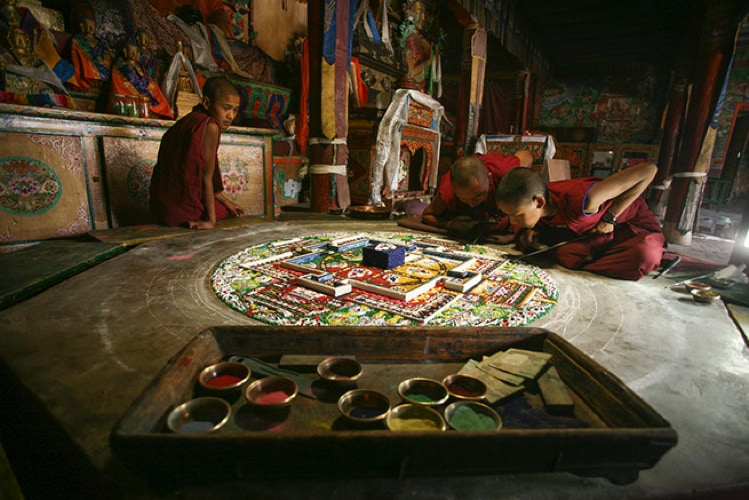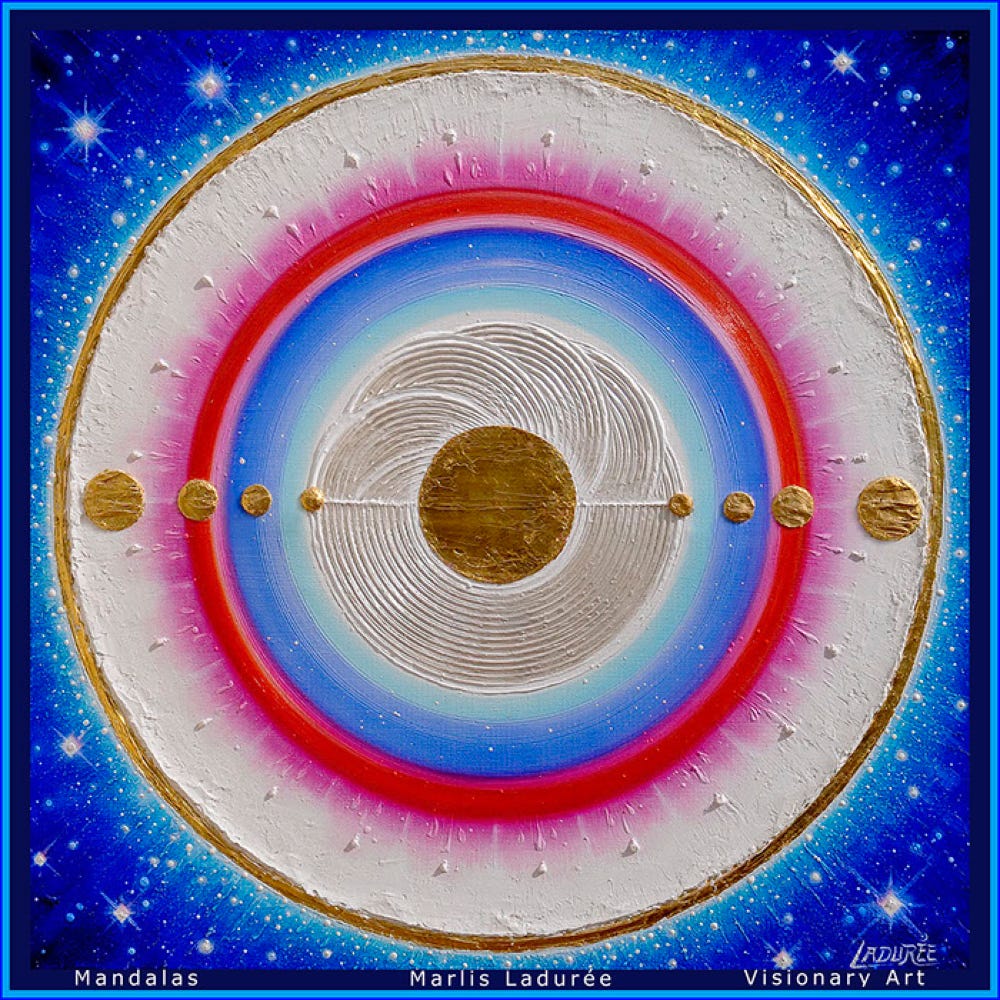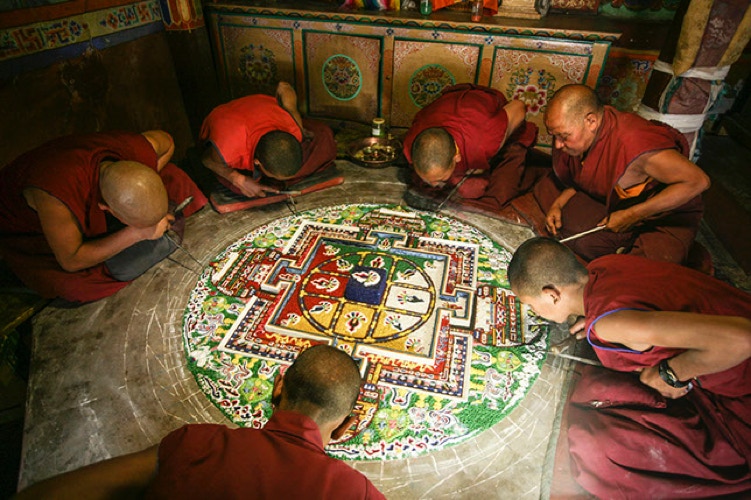Its origins can be found in Jainism, Tantrism, Hinduism, Buddhism and Lamaism. The word "Mandala" comes from Sanscrit, the sacred language of the Indian Brahmans. "Mandala" means "Circle" or more precisely, "Sacred Circle" or "Magic". In Tibetan it is Kyl-Khor - Kyl means "Centre" and Khor means "Circle".
crédit photo: Frédéric Reglain
The Mandala represents the ideal world. It is a geometric form with a centre -the concentration ; and a periphery -the organisation. Each traditional Mandala, of oriental origin has a Mantra - sacred Hindu or Buddhist formula as its content. The Mantra is the soul of the Mandala.
A Mandala is defined according to three principles of organisation : the central point, a radiation from this point and the circular outer border.
The radiation from the central point grows in a centrifugal fashion until it reaches the outer border where it is reflected back towards its centre in a perpertual mixture of centrifugal and centripetal movements. The central point is the point of departure as well as the point of arrival for all movement signifying unity in diversity or diversity in unity.

The central point symbolises the mysterious energy centre, the birth place of all existence in space and time. It also symbolises unity, totality and perfection.
It is without dimension or place : the circle and the sphere are born of it.
These are manifested forms from a central point. The central point appears as the beginning and end of all possible paths. The law of the centre is one of silence and the law of the world, that of the periphery, is one of movement.
The circle, the real border with the exterior, is the protector of the sacred contents, especially the centre. It is also the symbol of infinity and the absolute. It is for this reason that the Mandala has been considered throughout time and various civilizations to be a divine symbol.
The Mandala presents a model of the macro and microcosm : the centre and the rotation, unity and diversity (clusters within the galaxies, solar system, body cells, molecules and atoms).
It is a visualisation of the universe.

The centre of a Mandala represents the centre of the universe. It is the heart of the universe made up of wisdom, of energy emerging from emptiness, of silence.
In this silence, lives unity, the divine, the invisible, the metaphysical.
The periphery represents the creation of the world. It also represents the diversity of organisation of the universe, born of its centre.
If we think of the macrocosm, we discover solar systems. In the centre we find the star, the sun and, orbiting around it, the planets, their satellites and their moons organised around them.
crédit photo: Frédéric Reglain
If we take the galaxies : they have their centres there, where the stars are the most dense and where the light is brightest.
Their peripheries are the immense arms of the galaxies or spirals which, in their turn, have their own rotation around their own centres.
If we look even more deeply into the universe, we discover the clusters of the galaxies, which, in their turn, move around a centre.
The big bang itself reminds us of the schema of the Mandala.






